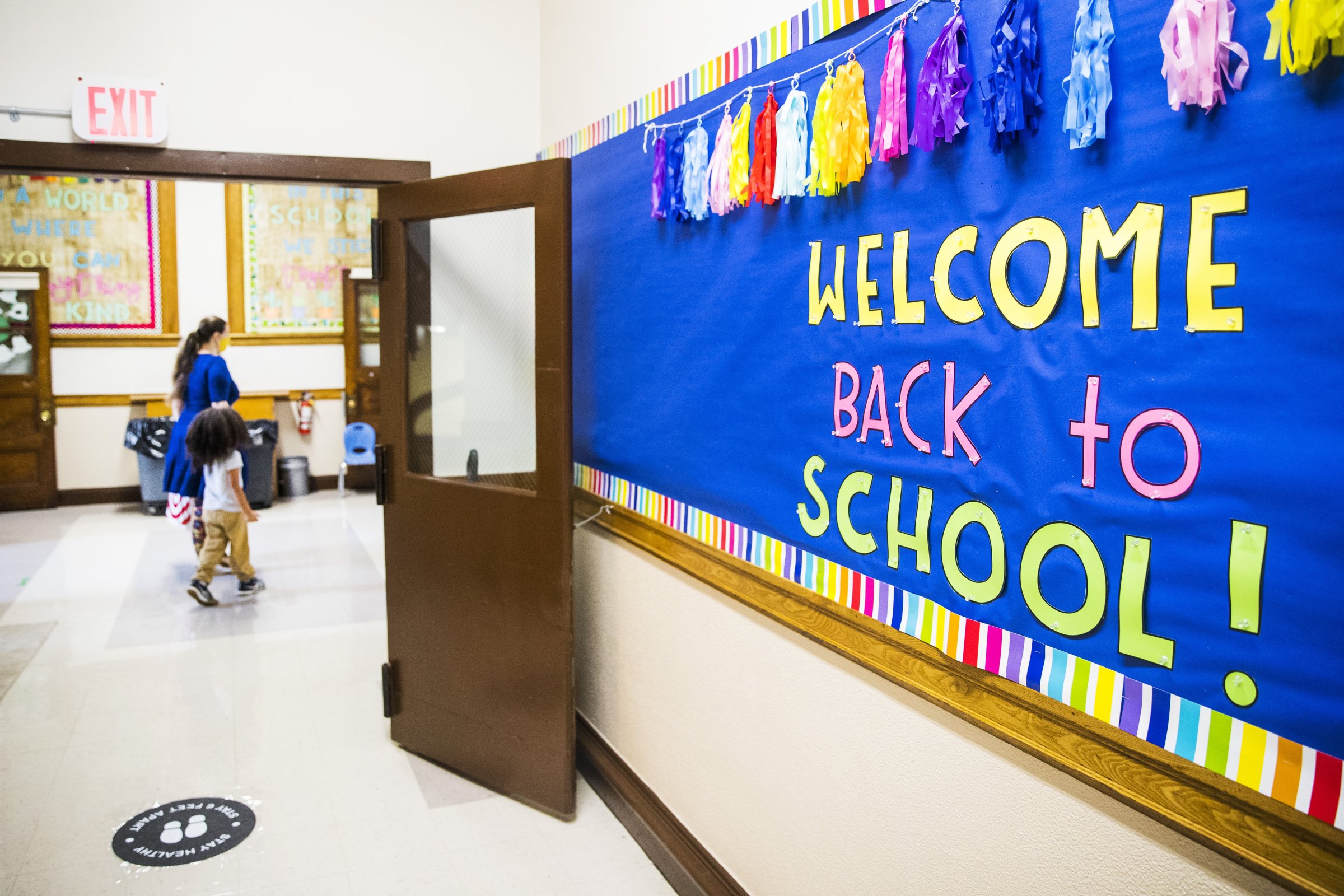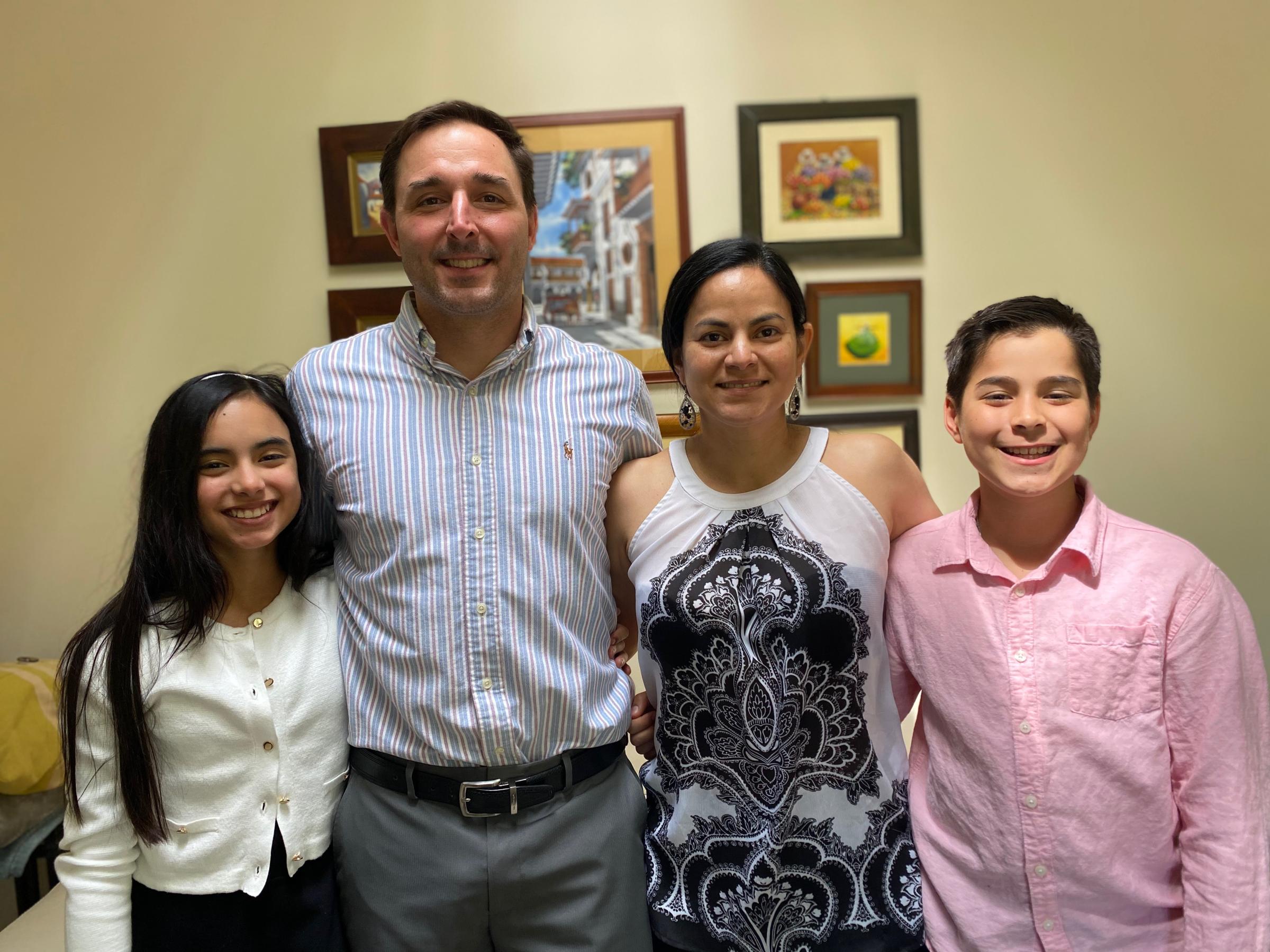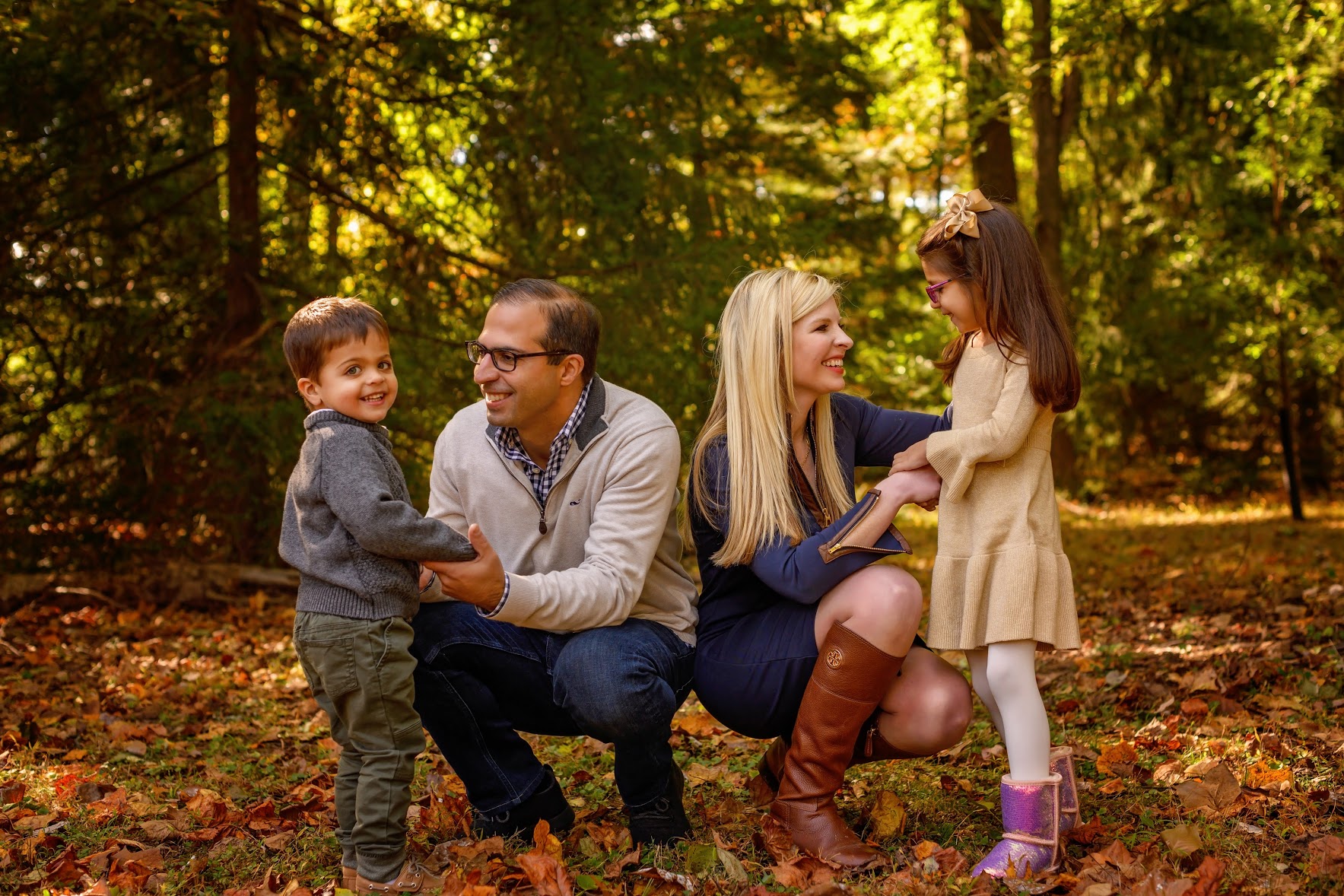
By the time the school year ended this spring, Clara Obermeier knew remote learning was not a good option for her two children. Her 13-year-old daughter had grown withdrawn after going months without seeing her friends. Her 11-year-old son had struggled academically, and due to a Zoom glitch, was frequently blocked from the virtual breakout rooms where the rest of his classmates were assigned to work in small groups. And neither Obermeier, an engineer, nor her husband, an active-duty officer in the U.S. Coast Guard, have jobs that will allow them to work from home full-time this fall.
“I waited and waited to figure out what the plan was from the school system,” Obermeier says. On July 21, Montgomery County Public Schools in Maryland announced that the district would offer virtual-only instruction at least through January. “At that point, we were like, OK, this is definitely not going to work out for us,” she says.
So Obermeier pulled her children from the public school district and enrolled them in St. Bartholomew School, a private Catholic school in Bethesda, Md., that charges $13,600 in tuition and is planning to bring all students back to campus by Sept. 21 after a phased reopening beginning Sept. 8.

Such decisions are playing out across the country ahead of the first day of school, as districts announce reopening plans and individual families craft ad-hoc solutions in preparation for what will be, at best, an unusual school schedule. But the solutions available to wealthier families — from private schools to pricey learning pods — have highlighted the ways the pandemic is exacerbating educational inequities. While many students struggled through the spring to access the most basic remote learning opportunities, often without home Internet service and computers, others had the benefit of private tutors or all-day virtual instruction provided by their schools.
“Schools are highly unequal. But the ability of families to provide education is even more unequal,” says Richard Kahlenberg, director of K-12 equity at The Century Foundation, a progressive think tank.
That’s a fact acknowledged even by parents who can afford private tutoring or private school for their children, and who struggle with the question of how to help their own kids without exacerbating educational inequity. Mayssoun Bydon, the managing partner at the Institute for Higher Learning, which offers test prep and admissions consulting, expects the coming school year to reveal an educational divide “like we’ve never seen before.” And yet, Bydon hired a private tutor for her own son, who attends a private school. “I felt like I couldn’t afford to just fail him personally,” she says.
Fall reopening plans vary widely among schools. About half of the country’s public school districts are planning on full in-person instruction, but 41% of the highest-poverty districts are beginning the year with entirely remote learning, according to an analysis by the Center on Reinventing Public Education. That means many of the students who are most likely to need the academic, social and emotional support of in-person instruction won’t receive it.
As of late July, 40% of private schools were planning on full in-person reopening, 19% were preparing for entirely virtual instruction, and 41% were offering a mix of both, according to a survey by the National Association of Independent Schools, which represents 1,600 private schools across the U.S.
Many of the private schools that are planning to bring students back for in-person learning have the advantage of small class sizes and large outdoor spaces that make social distancing easier, in addition to endowments and donations that have made it possible to upgrade air filtration systems, revamp nurses’ offices, set up tented classrooms outside, secure COVID-19 testing and hire more staff.
Schools are highly unequal. But the ability of families to provide education is even more unequal.
In Brooklyn, Poly Prep Country Day School— a 166-year-old private school where families pay as much as $53,000 in tuition and fees — will reopen for in-person learning on Sept. 8, setting up 70 “socially distanced tents” across its 25-acre campus. Younger students will be divided into pods that will be kept separate from one another, and the average lower-school class size has shrunk to 12 students. The school will require a negative COVID-19 test for everyone returning to school, and one family’s anonymous donation will cover testing costs for faculty.
At Boston Trinity Academy, a pop-up on the school’s website asks visitors for patience “as we are experiencing an unusually high number of applications.” Compared to a typical summer, the small Christian school saw a 40% increase in applications this summer, mostly from public school families. But social distancing requirements led the school to cap some classes at nine or 12 students, limiting how many new students they can accept. Admissions Director Bisi Oloko said the school’s seventh grade was full, but two students transferring there from other schools were willing to repeat sixth grade to get a spot at Boston Trinity. Boston Public Schools, a district that serves more than 53,000 students across 125 schools, will begin the year remotely until Oct. 1, when the district plans to begin a hybrid model. Boston Trinity Academy, which enrolls about 230 students at a tuition rate of $20,700, will begin classes in person on Sept. 8, with about 10% of students choosing a virtual option instead.
“There are disgruntled parents out there,” says Headmaster Frank Guerra. “There are people who felt like their school systems let them down, and their kids were almost like on a three-month vacation, and that’s devastating.”
That’s why, for parents who can afford it, private schools with unique reopening plans have become an attractive solution.
Roxana Reid, founder of the New York City educational consulting firm Smart City Kids Inc, saw a “ridiculous uptick” in business beginning in June, as she heard from families looking to transfer from public to private schools. Bydon, of the Institute for Higher Learning, has seen a 38% increase in her business since March as parents seek private tutors or ask the company to develop personal curricula for their children.
The experience has left Bydon worried about the growing divide between students at elite private schools and those at underfunded public schools.
“We’re going to end up with a real educational divide between the haves and the have-nots and without a way to reverse it,” Bydon says. “Who’s going to fail are the kids who don’t have the money.”
But Bydon, who lives in New York City, can also relate to her clients who have sought out expensive help for their kids. When schools shut down in March, her son was in kindergarten and had just been learning to read, so she hired a private tutor to make sure he didn’t fall behind. “Nobody imagined that there was going to be another full academic year of this,” she says.

In Vienna, Va., Colleen Ganjian withdrew her daughter from Fairfax County Public Schools after the district announced it would begin the school year remotely, enrolling her in a private Catholic school instead.
“I just want her to have consistency,” says Ganjian, an educational consultant and founder of DC College Counseling. “The bottom line is I am so busy. I own a business, and I can’t be that person. I can’t provide her with the consistency that she needs. That’s kind of why I feel I needed to look for an alternative.”
On Aug. 26, she dropped her daughter off at her new school “bright and early” for the first day of third grade, in person and wearing a mask. “I think she was excited to just get out of the house,” Ganjian says.
Exacerbating inequity
The role of private schools has become a hot button issue within the contentious debate over whether it’s safe to send kids back to class. President Donald Trump has called on public schools to fully reopen in person, and if they don’t, he said school funding “should follow students so parents can send their child to the private, charter, religious or home school of their choice.” Education Secretary Betsy DeVos issued a rule for more coronavirus relief funding to be directed to private schools, prompting lawsuits from states and school districts in response.
On July 31, Montgomery County Health Officer Dr. Travis Gayles issued an order directing all non-public schools to remain closed for in-person instruction until at least Oct. 1, saying “at this point the data does not suggest that in-person instruction is safe for students or teachers.” That prompted backlash from private school parents. Many of them signed petitions, arguing that private and parochial schools should be allowed to develop plans in line with CDC and state guidance “without arbitrary and capricious interference from county officials.”
Obermeier was one of several parents who sued the county to reverse Gayles’s decision. The lawsuit argued that private schools had spent time and “millions of dollars” to ensure safe environments for children and staff, and it accused Gayles of being driven more by concerns over equity than public health.
“It appears to be a political response, an answer to complaints by some public school parents about ‘why their schools are closed and private schools are not,'” the lawsuit stated.
Maryland Gov. Larry Hogan, a Republican, issued an executive order overruling the county’s directive, giving school districts and private schools across the state the authority to decide when and how to reopen. (An attorney representing the parents said their lawsuit has not been dismissed but that they’re focusing on “promoting collaboration between Montgomery County and nonpublic schools.”) While all public school districts in Maryland are beginning the year virtually, Hogan encouraged schools to reopen in person, announcing on Aug. 27 that all districts had met state benchmarks to offer some in-person instruction.
In California, Gov. Gavin Newsom, a Democrat, announced that any school—public or private— in a county on the state’s coronavirus watchlist cannot reopen in-person. But schools can apply for waivers to reopen early for kindergarten through sixth grade. Informal surveys by the California Association of Independent Schools (CAIS) found that “most CAIS schools that include grades K-6 are keen to re-open on campus” and many have applied for waivers. The association said it believes that “on-campus schooling is better for kids than distance learning, provided it can be done safely.”
It’s not yet clear whether families are withdrawing from public schools in significant numbers. A survey by the National Association of Independent Schools conducted in August found that 51% of private schools either maintained or grew enrollment for the coming school year, and 58% reported a “larger than average” number of admission inquiries from families in other types of schools — a category that could include traditional public schools, charter schools and parochial schools. Some private schools have also faced financial challenges during the pandemic, reporting a drop in international student enrollment and fewer fundraising opportunities. More than 100 private schools — mostly private Catholic schools — have permanently closed this year because of pandemic-related challenges, according to the libertarian Cato Institute.
Education experts warn that moving children from public to private schools would have a negative effect on public schools in the long run.
“I can’t say that I fault individual parents for doing what they think is best for their own kids. But the secession of upper middle class families from public school to private school is very bad for the country and for educational equality,” Kahlenberg says.
And the very thing that is drawing some parents to private schools is also cause for concern among private school teachers. While teachers’ unions have opposed plans for in-person learning, threatening to strike if teachers and other school staff aren’t protected, most private school teachers are not unionized and have less leverage to object to their schools’ plans.
As of Aug. 30, nearly 3,000 teachers and other employees at more than 350 private schools had signed two anonymous petitions, calling for their schools to pursue virtual-only instruction to protect students’ and educators’ health. In interviews with TIME, several private school teachers said they are worried about the virus spreading when in-person classes begin but fear retaliation for raising concerns about school plans.
“There may be fears around enrollment numbers dropping that are driving people to be back on campus, fears around losing families who are paying pretty enormous tuitions,” said a teacher who organized one of the petitions and who requested anonymity for fear of being fired. “At schools that can offer a robust, successful remote program, it feels irresponsible not to take that route. Our hearts go out to underfunded public schools that do not have the luxury of making this choice that many private schools can make.”
That’s something that Erica Turner has been thinking about a lot, as both a parent and an associate professor at the University of Wisconsin-Madison, where she studies racism and inequity in educational policy. She recently published a guide for Equity in Pandemic Schooling, intended to be a resource for communities and families as they make plans for the coming school year.
When families abandon public schools and turn to private options, Turner wrote, “they undermine the schools upon which less privileged families depend,” making it harder for other students, especially low-income children of color, to get good educations. The guide encourages parents to advocate for more school funding from Congress, demand the resources to make remote learning accessible for all students—including those who are homeless or have disabilities—and keep their own children enrolled in public schools.
Obermeier, the mother in Maryland, says the issue of equity weighed heavily on her when she decided to pull her kids from public school. “It was hard to think that, ‘OK I can solve it for myself,” while many others in the district would be left without a solution, she says.
As an immigrant from Ecuador, she also worries that the challenges of this school year will disproportionately affect low-income families or immigrants who don’t speak English and who can’t easily help their children learn at home. “To me, the most equitable thing to have done was to open the schools and give priority to precisely the kids who need it,” she says.
But as more school districts fail to reopen, families will continue to find individual, if inequitable, solutions.
“In the end, we just have to make sure we have our priorities straight,” Obermeier says, “and for us right now, it’s stability and the least amount of disruption for our kids.”
More Must-Reads from TIME
- Where Trump 2.0 Will Differ From 1.0
- How Elon Musk Became a Kingmaker
- The Power—And Limits—of Peer Support
- The 100 Must-Read Books of 2024
- Column: If Optimism Feels Ridiculous Now, Try Hope
- The Future of Climate Action Is Trade Policy
- FX’s Say Nothing Is the Must-Watch Political Thriller of 2024
- Merle Bombardieri Is Helping People Make the Baby Decision
Write to Katie Reilly at Katie.Reilly@time.com